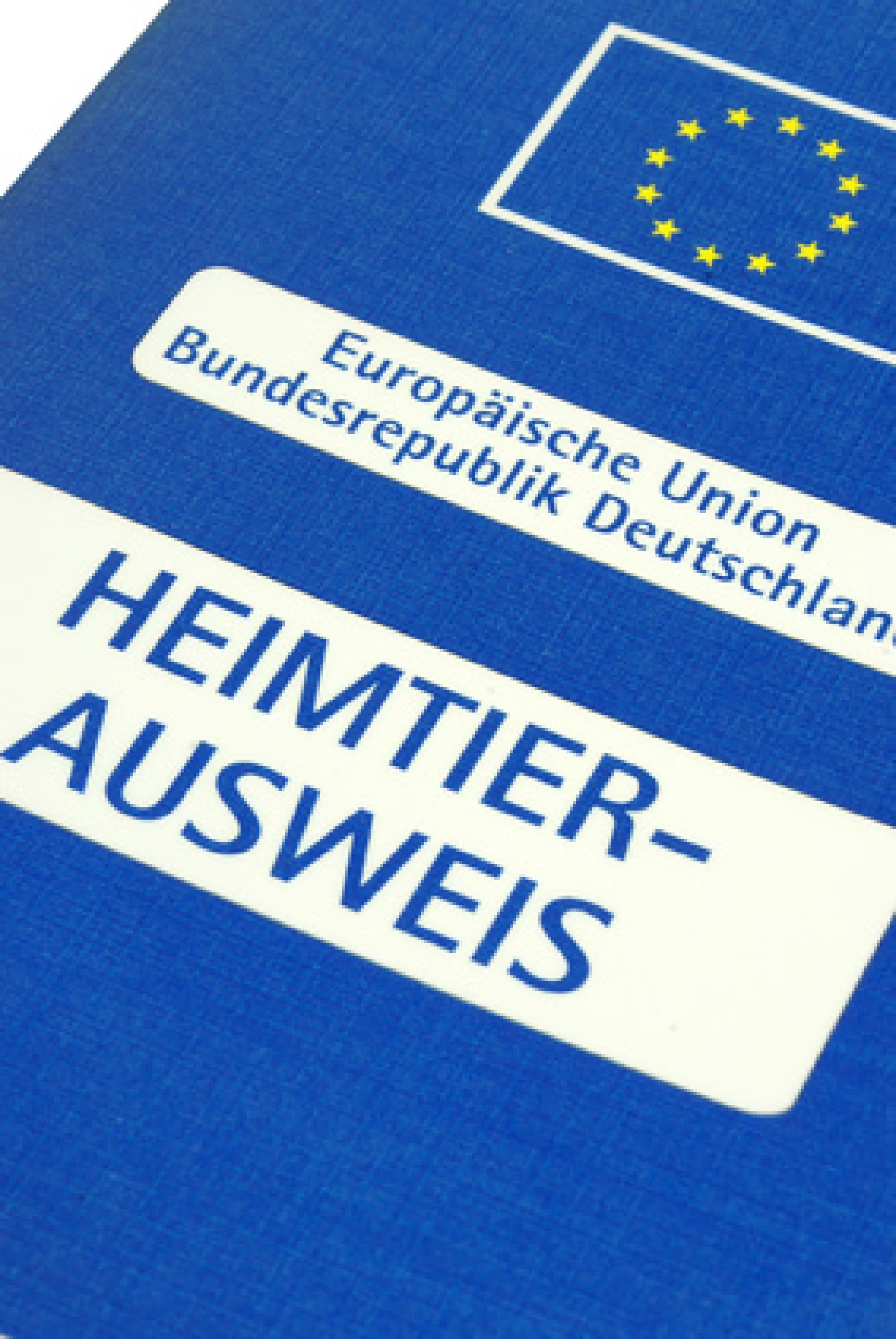Travelling with pets in the EU
Regulations for travelling with dogs, cats and ferrets within the EU

A maximum of 5 pets (dogs, cats, ferrets) may be carried per person when travelling. The animals must not be intended to change owners. If this is not the case, the regulations for trade in animals in accordance with Directive 92/65/EC apply. You can find more detailed information on this in the Regulation on the intra-Community movement, import and transit of animals and goods (Single Market Animal Health Regulation).
Under Regulation (EU) No. 576/2013 and Implementing Regulation (EU) No. 577/2013, which apply from 29 December 2014, dogs, cats and ferrets that are transported across borders within the European Union must always be accompanied by a standardised pet passport.
EU pet passports can be issued by a registered veterinarian. However, they require authorisation from the competent authorities under national law.
The maximum number of 5 pets may be exceeded if the animals are moved for the purpose of participating in competitions, exhibitions and sporting events or for training for such events (no change of owner). These animals must be at least 6 months old and there must be written proof that the animals are registered for one of the above-mentioned events. If more than 5 animals are to be moved for other purposes, the regulations for the trade in animals apply. You can find more detailed information on this in the Ordinance on Intra-Community Movement, Import and Transit of Animals and Goods (Internal Market Animal Health Ordinance).
Vaccination against rabies
In addition to information about the animal and its owner, the pet passport must contain veterinary proof that the animal has a valid vaccination against rabies. As a period of 21 days is required for the development of effective vaccination protection, this means that in the case of a first vaccination, this must be carried out at least 21 days before crossing the border.
If a booster vaccination is administered after the expiry of the validity period of the last vaccination, this vaccination corresponds to an initial vaccination (the validity period of the vaccination is noted in the passport).
This passport must be able to be clearly assigned to the animal, i.e. the animal must be identifiable by means of a tattoo or microchip and the identification number must be entered in the passport. Since 3 July 2011, microchipping has been mandatory for newly identified animals.
The transponders must
- comply with ISO standard 11784 (HDX or FDX-B transmission) and
- be readable with a reader that complies with ISO standard 11785.
Travelling with pet birds within the EU
When travelling with pet birds from countries outside the EU, protective measures must be observed to protect against avian influenza (colloquially known as "bird flu"). The Delegated Regulation (EU) 2021/1933 of the European Commission regulates the provisions for the entry of pet birds from third countries. Here, the number of birds is limited to a maximum of 5 animals. These may only be imported if accompanied by the owner or an authorised person.
If there are more than five birds, the provisions of Commission Delegated Regulation 2020/692 must be observed.
When importing pet birds, an animal health certificate and a declaration from the animal owner or authorised person must be carried. Depending on the country of origin, there may be additional requirements, which is why contact with the competent authorities is strongly recommended before travelling.


